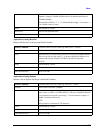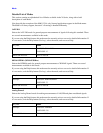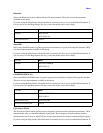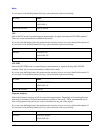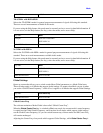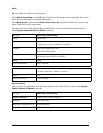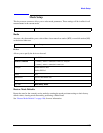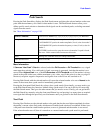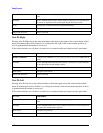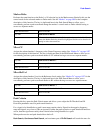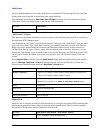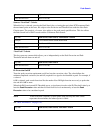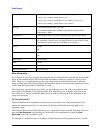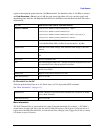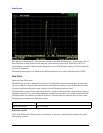
11 05
Peak Search
Peak Search
Pressing the Peak Search key displays the Peak Search menu and places the selected marker on the trace
point with the maximum y-axis value for that marker’s trace. The Peak Search features allow you to
define specific search criteria to determine which signals can be considered peaks, excluding unwanted
signals from the search.
See “More Information” on page 1105.
More Information
If
Same as “Next Peak” Criteria is selected, and either Pk Excursion or Pk Threshold are on, a signal
must meet those criteria. If no valid peak is found, a message is generated. And then the marker is not
moved.When
Highest Peak is on, or both Pk Excursion and Pk Threshold are off, the marker is always
placed at the point on the trace with the maximum y-axis value, even if that point is on the very edge of
the trace (exception: negative frequencies and signals close to the LO are not searched at all.
Pressing Peak Search with the selected marker off causes the selected marker to be set to
Normal at the
center of the screen, then a peak search is immediately performed.
Pressing the front panel Peak Search key always does a peak search. Occasionally, you may need to get
to the Peak Search menu key functions without doing a peak search. You can do this by first accessing
the Peak Search menu. Then go to the other menus that you need to access. Finally, you can get back to
the Peak Search key menu by using the front panel Return key and pressing it as many times as required
to navigate back through the previously accessed menus until you get back to the Peak Search menu.
Next Peak
Pressing Next Peak moves the selected marker to the peak that has the next highest amplitude less than
the marker’s current value. Only peaks which meet all enabled peak criteria are considered. If there is no
valid peak lower than the current marker position, an error is generated and the marker is not moved.
If the selected marker was off, then it is turned on as a normal marker and a peak search is performed.
Remote Command: :CALCulate:MARKer[1]|2|3|4|5|6|7|8|9|10|11|12:MAXimum
Example: CALC:MARK2:MAX performs a peak search using marker 2.
CALC:MARK2:Y? queries the marker amplitude (Y-axis) value for marker 2.
CALC:MARK2:X? queries the marker frequency or time (X-axis) value for
marker 2.
SYST:ERR? can be used to query the errors to determine if a peak is found.
The error –200 is returned after an unsuccessful search.
Notes: Sending this command selects the subopcoded marker.
Initial S/W Revision: Prior to A.02.00
Key Path
Peak Search



